I have a one column dataframe I ingested from a text file. So from this:
oneColDF = (spark.read
.format("text")
.load(file_path))
display(oneColDF)
, leading to this df:
with a hundred or so rows. There is no dependable delimiter in this format (for instance, a space won't work because some fields have spaces within), however, the columns are fixed-width, so i know column name and width for each field (all fields are strings). I know this because I was provided with dictionary:
fixed_width_column_defs = {
"submitted_at": (1, 15),
"order_id": (16, 40),
"customer_id": (56, 40),
"sales_rep_id": (96, 40),
"sales_rep_ssn": (136, 15),
"sales_rep_first_name": (151, 15),
"sales_rep_last_name": (166, 15),
"sales_rep_address": (181, 40),
"sales_rep_city": (221, 20),
"sales_rep_state": (241, 2),
"sales_rep_zip": (243, 5),
"shipping_address_attention": (248, 30),
"shipping_address_address": (278, 40),
"shipping_address_city": (318, 20),
"shipping_address_state": (338, 2),
"shipping_address_zip": (340, 5),
"product_id": (345, 40),
"product_quantity": (385, 5),
"product_sold_price": (390, 20)
}
So I can add empty columns like this:
multiColDF= oneColDF.withColumn('submitted_at',
lit(None).cast(StringType())).withColumn('order_id', lit(None).cast(StringType())).withColumn('customer_id', lit(None).cast(StringType())).withColumn('sales_rep_id', lit(None).cast(StringType())).withColumn('sales_rep_ssn', lit(None).cast(StringType())).withColumn('sales_rep_first_name', lit(None).cast(StringType())).withColumn('sales_rep_last_name', lit(None).cast(StringType())).withColumn('sales_rep_address', lit(None).cast(StringType())).withColumn('sales_rep_city', lit(None).cast(StringType())).withColumn('sales_rep_state', lit(None).cast(StringType())).withColumn('sales_rep_zip', lit(None).cast(StringType())).withColumn('shipping_address_attention', lit(None).cast(StringType())).withColumn('shipping_address_address', lit(None).cast(StringType())).withColumn('shipping_address_city', lit(None).cast(StringType())).withColumn('shipping_address_state', lit(None).cast(StringType())).withColumn('shipping_address_zip', lit(None).cast(StringType())).withColumn('product_id', lit(None).cast(StringType())).withColumn('product_quantity', lit(None).cast(StringType())).withColumn('product_sold_price', lit(None).cast(StringType()))
, so now the dataframe has all the columns:
So I am trying to figure out how to loop through the dataframe to update all the columns with the appropriate data from the value column.
for row in multiColDF.rdd.collect():
addTheDatafromValColToEachCol()
I am stuck at this point. I would be grateful for any ideas, either building on what i have done or perhaps a simpler solution. Thank you.

